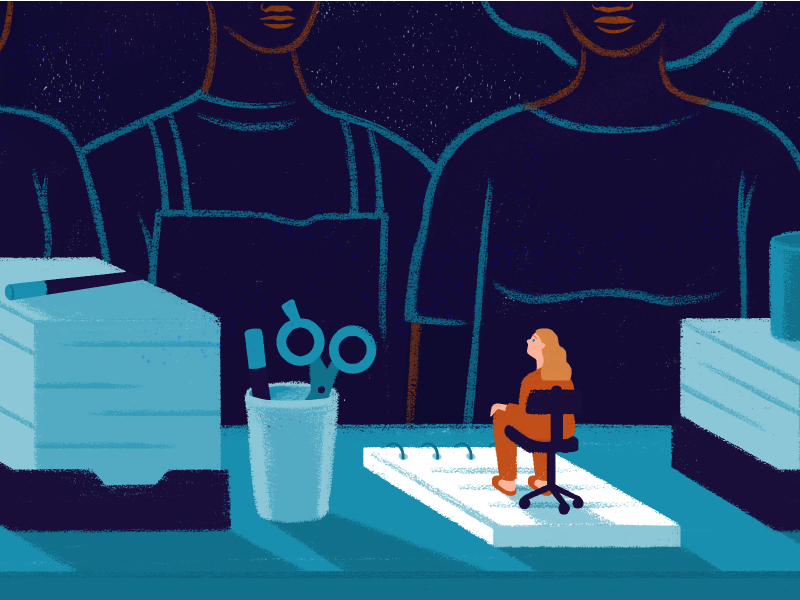
16 Feb Can Office Design Help Mitigate Harassment in the Workplace?
In the corporate arena, interior designers have the goal and responsibility to create functional, practical, comfortable space. It goes well beyond the need for beautification or even branding. When it comes to office design, we should focus more on how to influence employee behaviors through the design of space, with the aim of encouraging good behavior and prevent the bad. This goal is increasingly complicated in a post #MeToo era when more and more people are asking questions like: How can we create spaces that are safe for everyone who works in them? Is it possible for space design help to curtail sexual harassment and other misconduct at work? Here we pose several questions that we think about as designers and that those interested in creating safe spaces for employees might think about too.
How private is too private?
Privacy can be both good and bad. On the one hand, we want employees to have quiet space to effectively do their work and to tend to their needs without being too exposed (think about having to make a difficult call to a doctor’s office, for example). On the other hand, too much privacy can cause people to feel unsafe. Imagine an employee who is the subject of derogatory comments. If those comments are made in a place where no one else can hear them, the subject will likely worry that without witnesses, they may not be believed. Most individuals will try to make sure they are not alone with that person again, but what if the space precludes that?
Dr. Annalisa Enrile, who teaches at USC in the School of Social Work, told us that with “harassment on everyone’s mind when it comes to the workplace,” she thinks about designing areas where people won’t feel trapped, or can’t be cornered. So you might, for example, provide two exits in common spaces such as copy rooms, storage rooms, lunchrooms — spaces where too much privacy can work against someone. Private offices are typically the most efficient way to bring in visual and acoustical privacy but consider the level of privacy. An executive might feel productive in their large closed office but how do their direct reports feel in a one-on-one meeting if there’s little to no transparency in the enclosed space? If that employee is asking themselves, “Am I safe here?” how confident, productive, or expressive will they be? Dr. Enrile suspects that to be one of the main reasons some women prefer meeting with an executive in an open area that feels less hierarchical and more transparent.
When designing enclosed spaces, providing visual transparency can help alleviate the potential tension of a closed-door meeting with a superior while still maintaining acoustical privacy. Shared project rooms benefit from multiple walls of full glass as they eliminate any hidden corners.
Can too much transparency be a bad thing?
The short answer — yes. We’ve all heard the complaints about poorly designed open office plans where there is minimal privacy and people are subjected to seeing or hearing their coworkers eat, sleep, cough, and have loud conversations. Never mind the interruptions. These spaces can eat away at focus and productivity. And they can feel unsafe. Too much transparency can make workers feel exposed and vulnerable. Imagine if someone is being stalked by a co-worker? In a transparent workspace, there may be no place to escape. Would an employee in this situation feel comfortable to complain that a co-worker is “staring at them all day”?
Diane Rogers, an architect at IA San Francisco, explains that office design is about a balance of openness with the right level of privacy. “We are seeing fewer walls in spaces and relying on furniture to add more privacy for individuals so they can function when they need visual privacy,” she says (see the photo below). “People need places to have privacy when their emotions are overrun, or they need to have a highly personal phone call.” So how do you find the right level of transparency for your organization? “I find a layering approach works well,” says Leah Bauer, a director of interior design at HDR. “A thoughtful progression from private spaces, to semi-private, to open.”
The trick is to have enough diversity to meet everyone’s needs. Completely private areas might include bathrooms, private enclaves, and wellness rooms that can be locked. Partial privacy can be provided by offices with a window to the open space or a transom next to the door or by conference and phone rooms with frosted or partially frosted glass to show someone’s in there but not necessarily show their facial expressions. Relaxed work environments are designed to support user comfort and encourage collaboration and innovation, but they also require policies and training that outline appropriate behavior in a more casual atmosphere.
